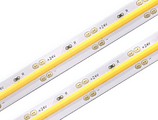How to choose color temperature in a home environment?
In a home environment, the quality and color temperature of light have an important impact on people's life experience. The correct choice of color temperature can not only create a comfortable and pleasant atmosphere, but also improve the quality of life. This article will explore in depth how to choose the color temperature of home ambient light and provide some professional advice.

First of all, it should be made clear that color temperature is an indicator used to describe the color of a light source. It is measured in Kelvin (K) and indicates the degree of warmth or coolness of the light. Generally speaking, a light source with a lower color temperature exhibits a warm yellow hue, while a light source with a higher color temperature exhibits a cool blue hue.

When choosing the color temperature of home ambient light, the following factors need to be considered:
Functional requirements: Different rooms have different functional requirements. For example, the bedroom needs to create a warm and relaxing atmosphere, so it is suitable to choose a light source with a lower color temperature; while the kitchen and studio need higher illumination, so a light source with a higher color temperature can be selected.
Personal preference: Some people like warm light, while others prefer cool light. Choosing a color temperature according to personal preference can make people feel more comfortable and happy.


Natural lighting: The natural lighting conditions of the room will also affect the choice of color temperature. If the room has good lighting, you can choose a light source with a higher color temperature; if the room has insufficient lighting, it is appropriate to choose a light source with a lower color temperature.
Color reproduction For areas that require accurate color reproduction, such as painting studios or photography studios, it is crucial to choose a light source with high color rendering.

To achieve an ideal home light environment, here are some suggestions for choosing color temperature:
Living room: Generally choose a color temperature of 2700K-4000K, which can create a warm atmosphere and ensure sufficient illumination.
Bedroom: A warm color temperature of around 2700K can create a comfortable and peaceful sleeping environment.

Study/Office: A color temperature of 4000K-5000K can improve concentration and work efficiency.
Dining Room: A color temperature of around 3000K can enhance appetite and create a warm dining atmosphere.

When choosing lamps, you also need to pay attention to the following points:
Color rendering: Choose lamps with good color rendering to ensure the true color of objects.
Brightness and light distribution: Choose lamps with appropriate brightness and light distribution according to the size and layout of the room.
Energy efficiency: Choose energy-saving lamps to reduce energy consumption and operating costs.

In short, the correct choice of color temperature of home ambient light requires comprehensive consideration of multiple factors. Through reasonable selection and arrangement, a comfortable, healthy and beautiful light environment can be created to improve the quality of family life.





